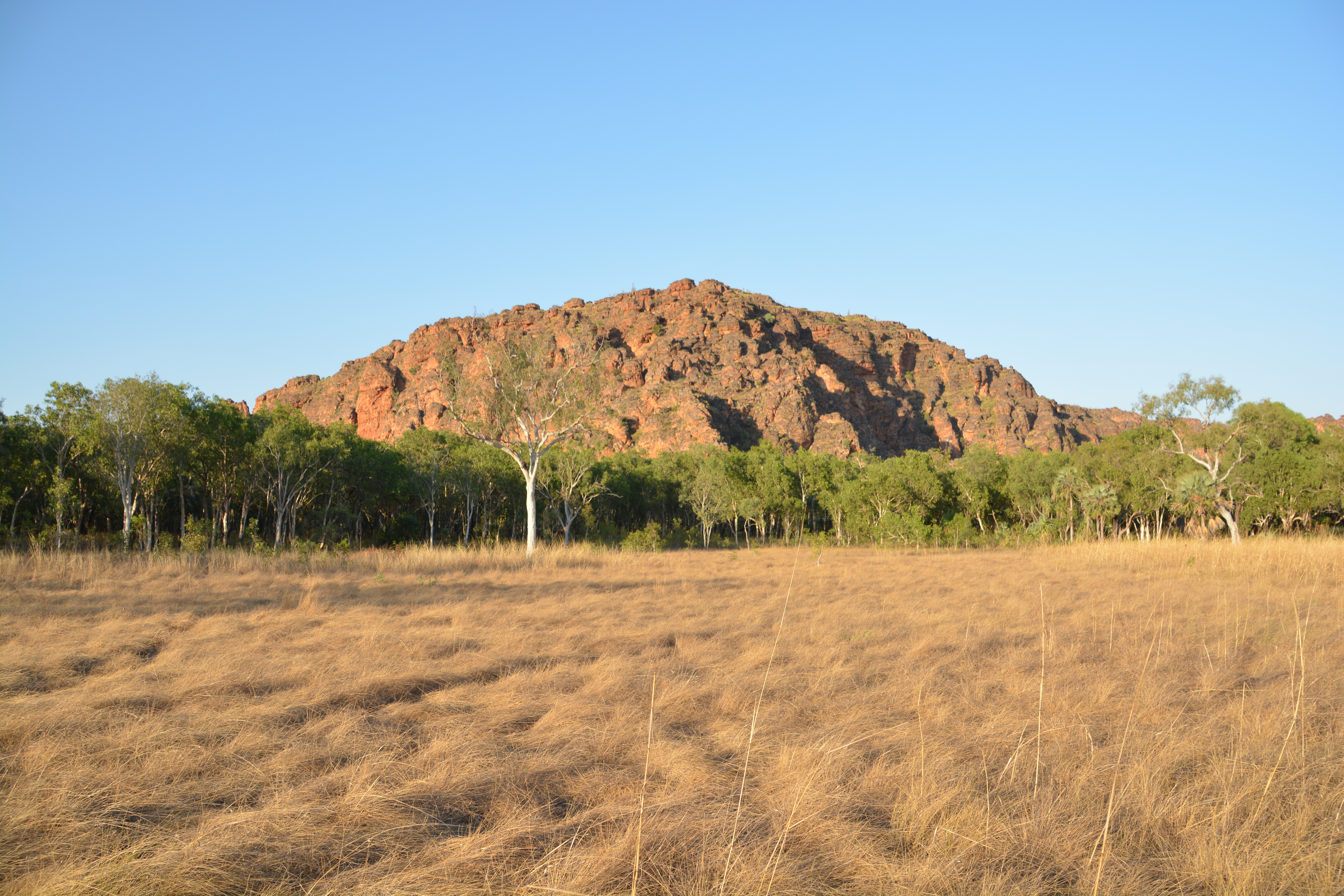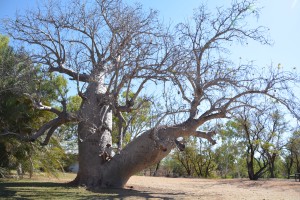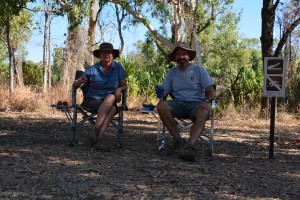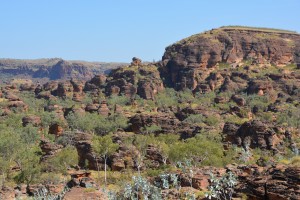Red rocks and fat trees
We pulled the mighty Cruiser up next to this extraordinary tree and took the mandatory photo. There are some amazing trees in the world with all sorts of unique sizes and features, survival tactics, special characteristics, flowers, nuts, leaves, roots, barks and the list goes on. But when it comes to unique features, I mean really special, different, crazy and a bit weird, nothing beats the boab tree. And we were driving into boab country, front and centre. So forget about crocs, they are so passé, now it’s all about boabs and the magnificent red rock canyons we have found with them.
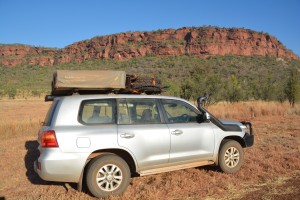
The red rock landscape dominated the land - later in the morning we climbed to the top of this bluff
As we drove further west toward the Western Australia border the mountains started to rise, if only slightly and occasionally, and the soil got redder. But geologically the amazing feature we started to see were these long escarpments of red rock that lined the flat valleys we drove through and presented imposing walls to the Victoria River that formed this region. And by the time we crossed the river at the eastern section of the Gregory National Park we knew we were in for a treat.
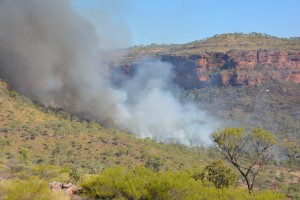
The locals' insistence on burning the land sometimes means a hazy skyline and a rush back to the car before you get cut off
We did two fabulous walks the first morning in this park, in the cooler early hours we climbed the escarpment to overlook the river and the mountains nearby. Unfortunately some overnight burning on both sides of the river caused a smoky haze across the valley and made us retreat rather quickly when the flames started moving in our direction. We had already had one horrible fire episode on this trip and were keen to avoid an encore.
The next walk was longer and the sun was hotter but the walk took us into the shadow of a massive escarpment sometimes up to 100 metres high featuring beautiful Livistona palms with their telephone pole-like trunks perched amongst the rocky slopes. On these cliffs we found numerous Aboriginal rock art paintings but really dined out on the size and scope of the valley with the high red cliffs and the sweeping vistas.
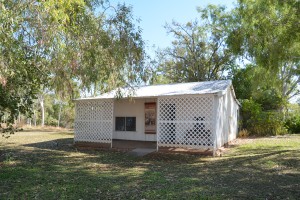
Historic Bullita Homestead in the middle of nowhere - the original settlers were made of tough stock
We did some long rough dirt roads and arrived at historic Bullita Homestead where some of the first pioneering pastoralists settled back in the 1880’s. It is in the middle of the dry season and therefore the coolest time of year but when we arrived it was 35 degrees (96 degrees Fahrenheit), the flies would carry you away without heavy boots and any breeze that might come up felt like a singeing furnace. Only the sturdiest and strongest of men and women could survive these harsh conditions but what it must have been like more than 120 years ago in such a remote and unknown place is beyond comprehension. After a quick look around to marvel at their stark existence we jumped back into the air conditioning and gasped for breathable air.
We also did a great eight km walk in Gregory NP’s Limestone Gorge which featured calcite flows, where calcium had come to the surface and made the creek bed look like frozen ice flows, and pulled into Timber Creek, a town of about 70 people, to check our messages. Then it was further west, amongst the red rock cliffs and passing amongst the magnificent boab trees, before turning north just before the WA border into Keep River National Park.
What is it about these boabs? They are everyone’s favourite and understandably so because they are so amazingly different to regular trees. It is said that boabs can live for thousands of years and we saw part-proof of this when Augustus Gregory, the original European explorer of this region, carved the date 2 July, 1856 into a huge boab. The girth of the biggest ones would almost rival the majestic California Redwoods but they are relatively short and plain otherwise.
They are nicknamed the bottle tree because of their fat bottle-shaped trunk but what makes them almost comical is their branches, sometimes sticking out in all directions like a ten-armed drunk with long fingers waving his hands in all directions. They are said to be able to store thousands of litres of water and frequently grow in clusters of up to five trunks bunched together, almost like a family of parents and kids. At this time of year they lose all their leaves to preserve water but still have an enormous seed the size of a big orange that the Aborigines turn into bush tucker. Their shapes and sizes are so different and expressive you almost think you are passing a field of huge monster kids playing. They are great fun.
Keep River National Park features a wide range of boabs but also some magnificent canyons, red rock escarpments and tabletop mesas the locals call ‘jump ups’ which we felt were somewhat under-rated, as judged by the very low profile of the park and the bare scattering of people we saw there. We went for a couple of walks here and all were excellent. The main walk was about eight kilometres and circled around a high lookout with magnificent 360 degree views of the rock formations and plains below and along an escarpment with some Aboriginal rock art and massive sandstone cliffs. We started early and barely made it before the temp hit 35 degrees but it was worth it. Keep River is a keeper.
From Keep River we turned west again and very quickly hit the Western Australia border where we had to handover some honey and other items which are not allowed in the very strict quarantine laws of the state. Western Australia is the home of the Kimberley and the famous Gibb River Road, both expected highlights of our trip and we hope to see more of our beloved boab trees and the red sandstone cliffs of the region. Bring it on!
